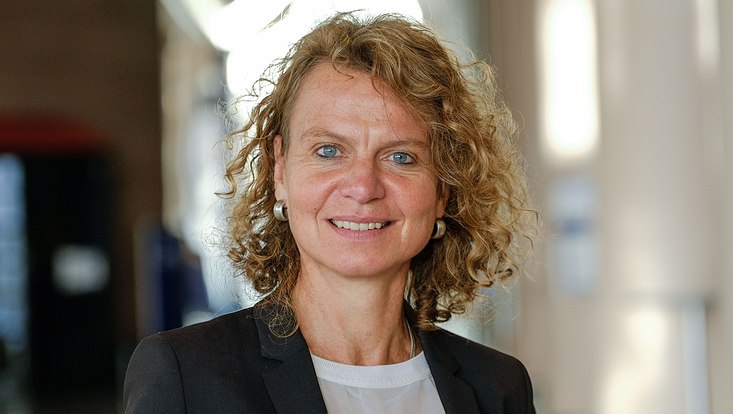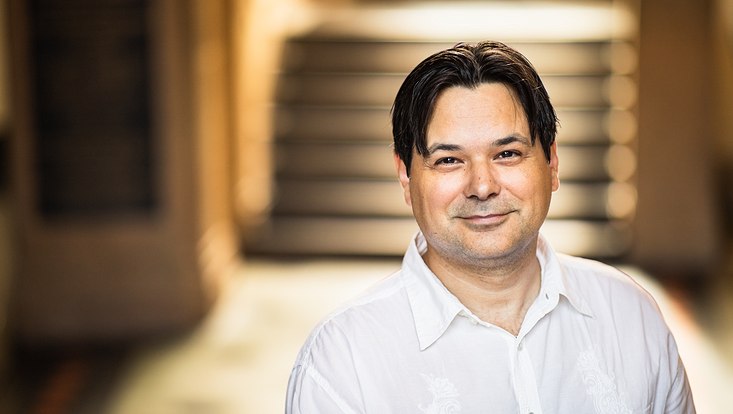Welcome aboard!Understanding and Interpreting the Impact of Cultural (Printed) MaterialsProf. Dr. Christina Meyer strengthens the humanities.
4 October 2023, by Meyer/Red.

Photo: Private
Every year, Universität Hamburg welcomes numerous new researchers. This series introduces them and their areas of research. This time: Americanist Prof. Dr. Christina Meyer.
Prof. Dr. Christina Meyer joined the Faculty of Humanities from Technische Universität Braunschweig in time for winter semester as a professor of English and American literature and cultural studies.
My research area in 3 sentences:
My research predominantly focuses on transnational comics studies, seriality research, periodical studies, inter- and transmediality and popular culture research. Currently, I am concentrating on 3 projects that deal with cultural phenomena and practices of modernity:
- transmediality in the Anglo-American culture and media history;
- north American children’s and youth magazines;
- modern transatlantic storytelling|art.
These different areas of research are linked by overarching questions regarding the appeal of (print) artefacts in the nineteenth and early twentieth century, which means I trace and analyze the origins, distribution, and reception conditions of cultural products, with the goal of obtaining an enhanced understanding of where and how they have the greatest impact.
This is how I explain my research to my family:
My research is easy to explain using well-known characters: for example, detective Sherlock Holmes was originally written by author Sir Conan Arthur Doyle at the end of the nineteenth century, so why is he still popular and featured in television shows, theater, or film today? Or the fact that comic superheroes like Superman, Batman, or Wonder Woman are still known and loved by many so many years after they first appeared in the late 1930s and early 1940s? When, how, and because of whom did they become famous in the first place? Similarly, what forms do they take? Drawings, depicted in text, photographs, or as 3-dimensional toy?
In my research, I am trying to find answers to these and other questions. I have concentrated on mostly unresearched English language material from the late nineteenth and early twentieth century. This includes, for example, popular characters from the children’s magazine St. Nicholas which have spread rapidly outside the original carrier medium (magazine). I also look at real-life personalities whose international careers began in newspapers as ongoing stories, interviews, and portrait series, and which have continued to develop over different media.
These (and other) figures were popular for a long time, then largely disappeared in the middle of the twentieth century, and barely feature in today’s memory. I research their careers: when, where, and how they began and ended, and what brought them into the limelight, and what kept them there. In this way, I am trying to understand how and where these (real or fictional) characters are or were influential.
In Hamburg, the city and the University, I am looking forward to:
Most importantly, I am looking forward to coming back to an institute where I have already worked as a visiting professor, and whose staff I came to greatly appreciate. It feels like a kind of homecoming. I am also looking forward to productive collaboration with my colleagues in the Institute of English and American Studies, as well as colleagues from other institutes and faculties at Universität Hamburg.
I am also really looking forward to meeting new students, and to researching and critically discussing important areas of Anglo and American literature of culture, and accompanying them, as well as the students I already know, and early career scholars on their way to graduating.
The fact that the Research Center for Graphic Literature is also based here is another reason why I am happy to be moving to Hamburg, as graphic literature in its various forms, media formats, and genres is a central area of my research and teaching. And, I mean, Hamburg is simply the most beautiful (Hanse) city in Germany, in my opinion.
These are my plans at Universität Hamburg:
One thing I want to push in the coming semesters in the Faculty of Humanities is the teaching of critical analysis of serial and multi-modal storytelling forms from both the past the present.
One of the central areas of my work is the medium of comics and how they weave together across national boundaries. Based on my own research on comics, particularly on the beginnings as a mass-media, I would like to offer additional research-oriented courses in this field in light of the didactic potential of the texts in (primary and secondary school) English teaching context.
In terms of knowledge transfer through teaching and research, I am planning mainly two things: for one, I want to design teaching that provides not only methodological and analytical knowledge, and provides opportunities to practice presentation techniques and skills, but also addresses aspects of public relations and funding acquisition, for example, and the planning and implementation of a student symposium at which participants present their ideas and results to a broad audience for discussion. I want to challenge myself to develop practice-oriented seminars, either as interfaculty co-teaching courses, or in the form of interuniversity seminars.
Secondly, I plan to establish project-based elements in a dialog with the non-university public, e.g. in cooperation with cultural institutions in Hamburg, such as the Amerikahaus. Teaching events like workshops, conferences, and guest lectures should help to make my research more visible in the public sphere.
This is why students should come to my lectures:
In evaluations, my former students often describe me as epitomizing their academic discipline and role model. They also often praise my humor. My enthusiasm for the discipline, for the core questions, key terms, theories, methods, categories of analysis, and concepts, and the sometimes trickier topics and texts is what I will try to transfer to my students in Hamburg, as well as motivation and joy in teaching and researching.
Students can look forward to interactive teaching that encourages communication, which also deals with niche areas such as feminist bicycle sci-fi literary texts, or previously under-researched materials and media from the past and the present, without losing the connection to real-life.
Reaching out to the world: I work with the following international and federal institutions and universities:
Through my studies in English and American Studies and Romance Language and Literary Studies, through my research stays both in the U.S. and France, as well as through my extensive activities of presenting papers and delivering (keynote) talks I have built up a network of cooperation and contacts with me, including institutions in the Netherlands, Austria, Belgium, France, Poland, and Sweden, Singapore, Australia, Japan, the USA, South America, and Canada. Preserving and expanding this network can make a huge contribution to Universität Hamburg’s internationalization strategy, and to the further development of degree programs and interdisciplinary research at the Institute of English and American Studies.
My research is important for society because:
My research is important and useful for a range of reasons. I deal with questions that are important for society because they encourage us to reflect on the development of the cultural memory and imaginary of a nation: how do literary texts and other culture products deal with the central myths of a culture? Which myths are preserved? How, for example, do texts imagine (future) scenarios of the modern world, what spaces do they create for thought, and and how do literature and other print materials function as social agents by not only presenting, but also helping to produce them?
My research, and the knowledge it has provided me, also enables me to reflect on cultural phenomena, products, and practices from the past and present. This allows me to interpret the creation of and interconnections between different discursive cultures at specific historical times and analyze the configurations of these in our present times.
Additionally, through my research activities I have learned how (inter-)national research collaborations stimulate change, what synergy effects can be generated through interdisciplinary cooperation, and the importance of dialog and discussion skills, not only within such networks, but also in daily (professional) life and for participation in a global society.


